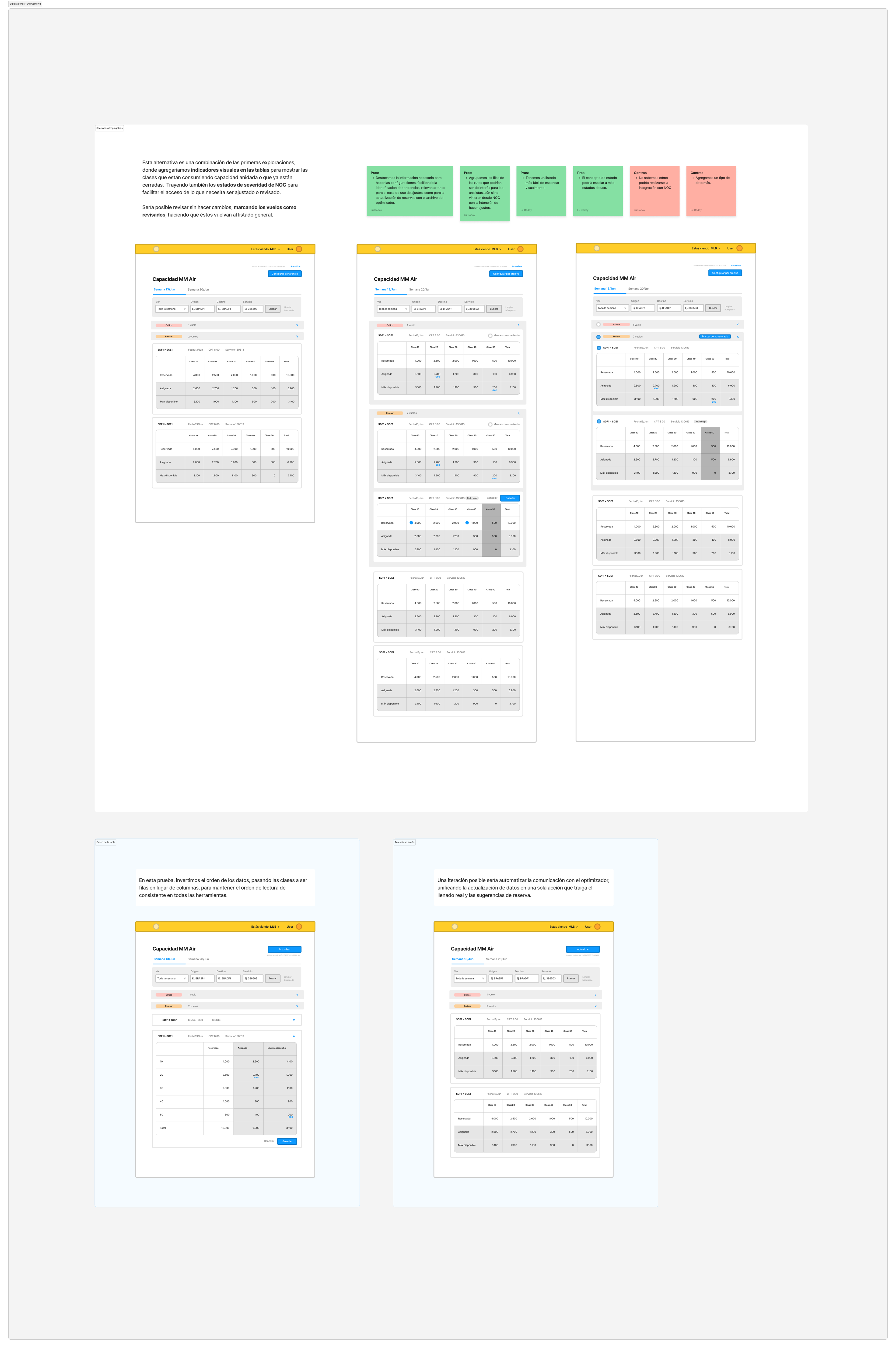The Challenge
As part of a cross-company initiative aimed at systematically categorising packages based on predefined parameters, with the objective of prioritising those that contribute significantly to the company's revenue, our team undertook the development of a bespoke tool. This tool would help transport analysts in strategicly planning the reservation of cargo capacity for packages across air and ground transportation channels.
The Team
A product analyst, my team leader and myself functioning as senior UX designer, being in charge of:
- User research
- Information architecture analysis
- Features definition
- Interaction design
- Information architecture analysis
- Features definition
- Interaction design
Initial Discovery
Our journey began with a preliminary definition of the tool's scope and its interdependencies with other tools. Subsequently, we engaged in conversations with our users, seeking to understand their existing tasks related to capacity management and trying to anticipate the impact of integrating our new tool into their workflow.
This effort resulted in a detailed user journey, encompassing both their current tasks and future aspirations, complete with identified goals, existing tools, and potential opportunities.
Ideation and features definition
Initiating the design phase, we created a schematic flow for the new tool, providing a structured framework as we delved into collaborative discussions with the team, using Figjam as our whiteboard. Our focus encompassed ideation of features, refining information architecture, and optimising layout considerations. Through the iterative process, we sketched various low-fidelity alternatives, assessing their respective pros and cons.


Ultimately, consensus within the team led us to a solution that met the satisfaction of all stakeholders; so we translated our vision into a functional prototype, allowing us to conduct user testings.
With our hypothesis validated and user feedback confirming the absence of usability or comprehension issues, we seamlessly transitioned to the next stage of development.
MVP
The MVP focused on three pillars:
- Dynamic Prioritization: Auto-sorting packages by revenue, weight, and destination.
- Capacity Visualization: A map overlay showing available cargo space per route.
- One-Click Reservation: Reducing manual entry with pre-filled forms.
- Capacity Visualization: A map overlay showing available cargo space per route.
- One-Click Reservation: Reducing manual entry with pre-filled forms.
We launched the MVP to a pilot group of analysts, pairing it with a feedback loop for rapid iteration.
Change of Plans & Iteration
Initial feedback revealed a critical oversight: while discussing connections across tools we discovered that other teams were trying to solve the same problem.
We quickly began by re mapping the cross-tool connections to uncover overlapping efforts across teams. Partnering with stakeholders and team members, we realigned goals and scopes to eliminate redundancies and simplify workflows for analysts.
By focusing on core priorities, we accelerated delivery—turning fragmented solutions into a streamlined set of tools. The result? A simpler solution delivered faster, cutting shipping delays ahead of schedule.
Final Results
- Faster implementation with shared team ownership.
- Efficiency: Analysts reduced capacity planning time sooner than projected.
- Adoption: All analysts integrated the tool into daily workflows within a short period of time.
- Efficiency: Analysts reduced capacity planning time sooner than projected.
- Adoption: All analysts integrated the tool into daily workflows within a short period of time.
What I Learned
- Flexibility Over Rigidity: being able to adapt and pivot in real time can save a project.
- Cross team communication is key: for large companies, keep track of projects is a real challenge, systematic inside research and cross reference really makes a difference.
- Pilot Pragmatism: Starting small with a dedicated group surfaced problems early.
- Cross team communication is key: for large companies, keep track of projects is a real challenge, systematic inside research and cross reference really makes a difference.
- Pilot Pragmatism: Starting small with a dedicated group surfaced problems early.
